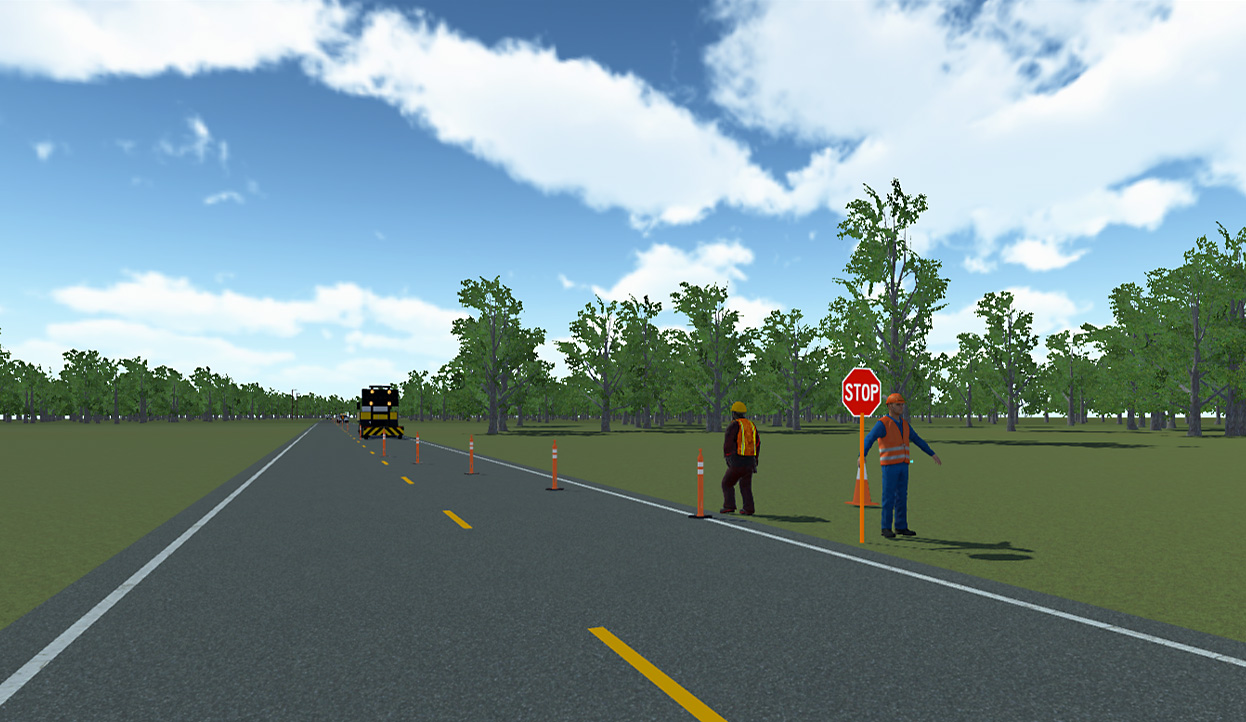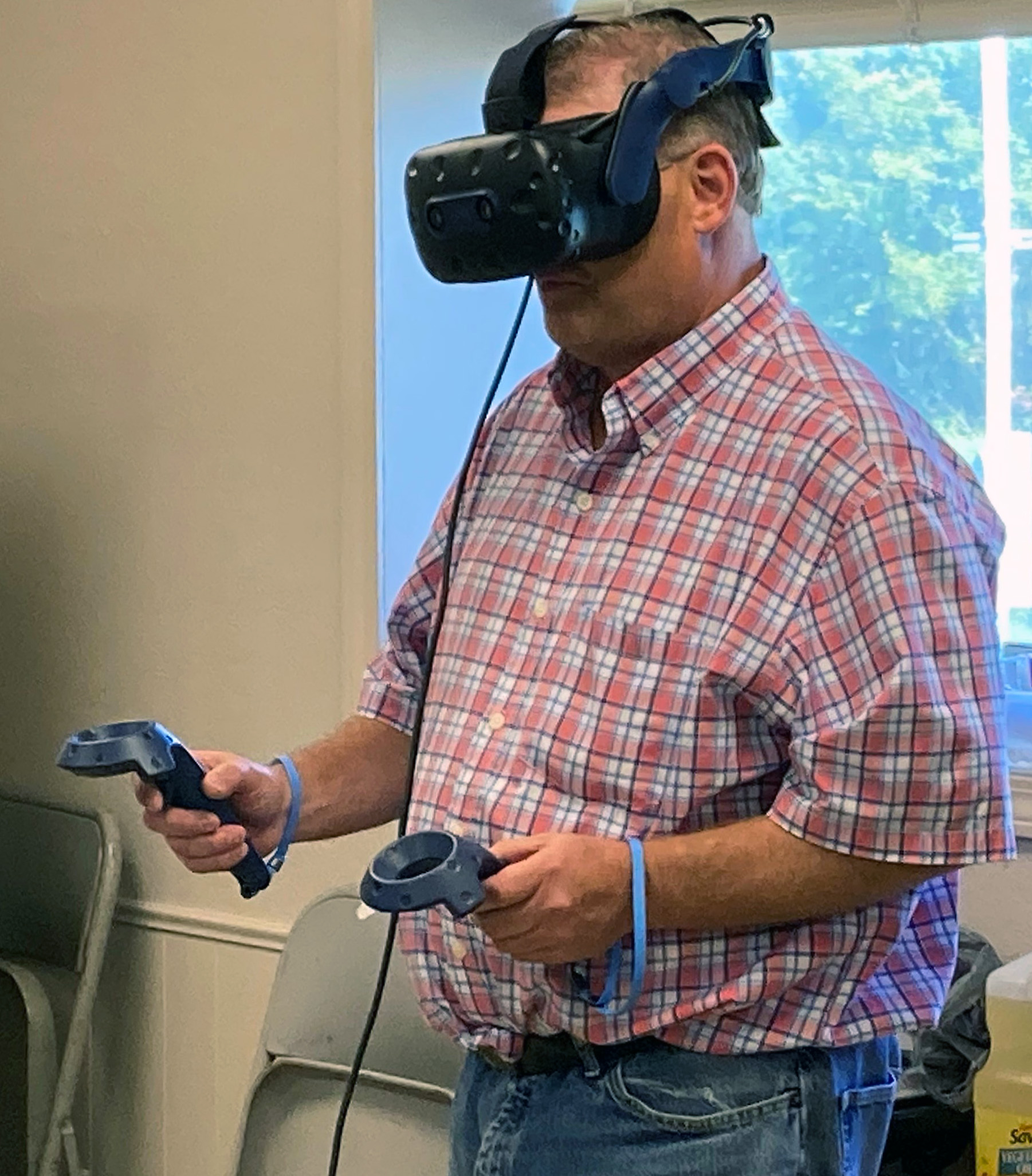
Missouri Accelerates Market Readiness for Work Zone Innovations
Integrating new innovations into widespread use can take many years due to the gap that exists between research and practice when a technology has been proven but is not fully ready for the marketplace. The Federal Highway Administration’s (FHWA’s) Accelerating Market Readiness (AMR) program targets this gap and advances innovation by funding pilot demonstrations and evaluations. The program seeks to move innovations into the marketplace that are significant improvements over similar, currently available innovations or practices.
In 2021, FHWA awarded its first round of AMR projects based on proposals received in response to a Broad Agency Announcement for the program. These seven awards totaled more than $2.6 million in funding for transportation innovators from State departments of transportation (DOTs), academic institutions, and the private sector.
The Missouri DOT (MoDOT) received two awards: one for an immersive virtual reality training program for work zone inspectors called iTrain and one for a pilot program for a semi-autonomous leader-follower truck-mounted attenuator.

Virtual reality training simulations such as the one shown here provide engaging training opportunities for MoDOT staff.
Credit: Missouri Department of Transportation/Missouri Center for Transportation InnovationJeff Zaharewicz, Director of FHWA’s Accelerating Innovation program team, explained how MoDOT was able to secure two awards in this initial round. “The Broad Agency Announcement for the program called for topics that enhanced safety, improved performance of infrastructure, or could shorten project delivery,” Zaharewicz said. “Both of MoDOT’s proposals clearly articulated the State’s goal for safety, why they wanted to do it, and the specific benefits the innovations would provide if they were to be selected for the program.”
Now, 2 years later, these programs are bearing fruit through visible results.
iTrain
At the time of award, MoDOT and the University of Missouri had already collaborated on developing and testing virtual reality (VR) training modules, but MoDOT was able to use the AMR funding to expand and complete the scenarios to include advanced work zone training. In January 2023, MoDOT personnel attended the first two flagger training events to incorporate the new VR training modules. After completing these modules, participants indicated the courses were more engaging than traditional trainings. The team also presented a new semi-automatic method for constructing VR environments at a VR conference in March. MoDOT is now looking at incorporating VR modules into additional training prtograms.
Jennifer Harper, MoDOT Research Director for Construction and Materials, says that AMR played an important role in the successful implementation of iTrain. “At the time of the award, we had conducted a proof of concept, but the initial funding didn’t account for deployment costs or expanding the VR program to include work zone training,” she said. “Without AMR, we couldn’t have funded the equipment for testing these trainings on a wider basis.”

MoDOT staff members train in virtual reality using state-of-the-art equipment.
Credit: Missouri Department of Transportation/Missouri Center for Transportation InnovationLeader-Follower TMA
Truck-mounted attenuators (TMAs) are a key piece of work zone safety equipment that not only give drivers notice of work ahead, but also absorb impacts if drivers do not heed the other indicators and crash into them. Traditional TMAs can protect most workers from these types of crashes but still require a driver who could be subjected to impacts. Between 2018 and 2023, MoDOT recorded 239 crashes with TMAs and 20 resulting injuries to MoDOT workers. To address this safety challenge, MoDOT became interested in piloting a leader-follower TMA system, a semi-autonomous version of this technology that can remove the driver from the TMA and be directed by the leader vehicle through connected vehicle technology.
“Before the AMR award, we were at a stalling point,” said Harper. “MoDOT had the pilot project, but didn’t have a way to branch out, get others involved, and expand testing. The AMR award helped fund a second set of equipment and has helped MoDOT determine how to implement this technology statewide.”
MoDOT is still testing the leader-follower TMA with a driver for safety but plans on testing without one in the near future. Next on the horizon for the leader-follower TMA program is testing during striping season, where the agency will be able to develop criteria for when and under which scenarios to use this system going forward.
Another important aspect of this project that AMR funded was third-party assessment of the units.
“Third-party assessment is a unique eligible activity for AMR funding,” said Zaharewicz. “This provides the opportunity for the awardee to obtain an objective evaluation on whether the awardee’s technology or innovation is performing to their expectations. This type of assessment might be more challenging for agencies on their own. This sort of assessment will allow these project results to be shared in a more widespread manner.”
The projects awarded during AMR’s first round are helping bridge the worlds of research and practice by providing resources to assess these emerging innovations and document their performance in a real-world setting. As the first group of AMR projects continues to show results, FHWA is excited to share this information as it is received.
FHWA was pleased with the initial response to the program through the first BAA and is looking forward to continuing the program in the near future.
“We learned that the market for AMR resources is strong and comes from all sectors—transportation agencies, academic institutions, and the private sector,” added Zaharewicz. “It will be exciting to see how the program can continue to support innovations on their journey to market.”
—MORE INFORMATION
Contact Jeff Zaharewicz for details on FHWA’s Accelerating Market Readiness program.
Contact Jennifer Harper for information on MoDOT’s Research Projects.
Notice: The U.S. Government does not endorse products or manufacturers. Trademarks or manufacturers’ names appear in this article only because they are considered essential to the objective of the document.
Recommended Citation: U.S. Department of Transportation, Federal Highway Administration - Washington, DC (2023) Innovator Newsletter, July/August 2023, Volume 17 (97). https://doi.org/10.21949/1521753
- Cover
- An Open-Ended Approach to Meeting Design-Build DBE Goals
- EDC Legacy: Capturing the Value Created by Transportation
- Missouri Accelerates Market Readiness for Work Zone Innovations
- Innovation and Impact
- States Innovate
- STIC Showcase Features Homegrown Innovations
- EDC-7 Baseline Report Sets Goals for Seven Innovations
- About Innovator



